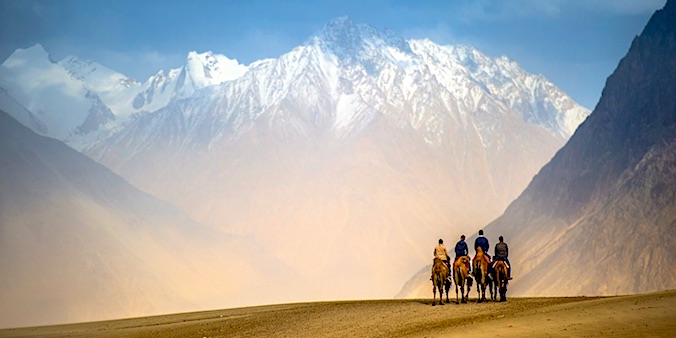LADAKH EXPLORATION - NUBRA & PANGONG
Tour - 18 days/ 4 days trekking
NUBRA & PANGONG LAKE
Tour - 18 days/ 4 days trekking
About LADAKH
Ladakh is a part of the Indian Himalayas, located between the Kunlun mountain range in the north and the main Himalayas to the south. As it is the only Indian region that lies north of the Great Himalayan Range, it is very different from the rest of the Indian Himalayas. In many ways it resembles Tibet. Although part of India now, and earlier of the princely state of Kashmir, Ladakh has been an independent kingdom for almost 900 years.
Ladakh is best known for its Buddhist (‘Tibetan’) culture and its starkly beautiful mountain scenery. It is inhabited by a mix of Indo-Aryan and Tibetan people. Especially the latter, with their colorful Buddhist culture, have given the region the nickname of ‘Little Tibet.’
As a result of its location, in the rain shadow of the Great Himalayan Range, the climate is extremely dry. And due to the high altitude – most valleys are situated at 3300m or higher – winters can be extremely cold. Summers, however, are generally pleasant if not warm and sunny.
Read more…Read less…
TREKKING PARADISE
Ladakh in the narrower sense is the Indus Valley with adjacent areas. It is bordered by two mountain ranges: in the northeast by the Ladakh Range, in the southwest by the Zanskar Range. The area around the capital Leh, and further upstream towards Tibet, is referred to as Upper Ladakh. Lower Ladakh is the area further downstream towards Kargil, where the Indus enters Pakistan.
The remoter areas of Zanskar, Nubra and Rupshu are now seen as regions of Ladakh. In the past, these areas were sometimes part of Ladakh, sometimes not. They can be visited from Leh by car, on foot (trekking) or by bicycle. Trekking or bicycling would be our advised means of transport. That is, if you are up to it. Because, while jeep trips in Ladakh are very rewarding indeed, trekking and bicycling will give you an even more in-depth experience of the land and the people, with the added bonus of a total renovation of body and soul.
Ladakh can be reached by air or overland. On this tour, you fly in and out. In case you have enough time available, we strongly recommend taking one of the overland routes, in which you travel by train and car to Ladakh through Srinagar in Kashmir, Manali or Shimla, the latter two both in the Himalayan state of Himachal Pradesh. These are among the greatest car journeys in the world.
Region
Ladakh
(India)
Best Time
July. - Sept.
No. Of Days
18 days,
4-day trek
Trip Character
Jeep tour with short trek
Sleeping Altitude
3100 - 3700 m.
Trek Character
Homestay
Level: 1
Price
INR XXX/ $ XXX
About THIS TOUR
On this 18-day journey you’ll explore Ladakh’s wonderful mountainscapes, people and monasteries. You’ll see the most interesting parts of Ladakh: Nubra, Sham and Pangong Lake, mostly by car but partly on foot as well. From Delhi you fly to Leh, the capital of Ladakh. This flight takes only one hour but is probably one of the most spectacular air trips you’ll ever do. Flying first over the hazy Northindian plains, then over the glaciers of the Himalayan Range and lastly the colorful bare mountains of Ladakh, it will become clear hat you are transferred into a different world.
This is a high world, and in order to get used to the altitude you will be spending three nights in Leh, taking it very easy. Then, you’ll journey further down the Indus Valley, to the Sham area, where you’ll be doing an easy but very rewarding trek between awesomely bright-green oases set amidst colorful mountains, as well as visiting Alchi and Lamayuru Gompa, two icons of Ladakhi monastic life.
Then you’ll cross two of the highest road passes in the world and visit the idyllic Nubra Valley, home to time-warped villages and hidden little monasteries. Three days will be spent at a community-based ecolodge in the traditional village of Shyok, where you will experience the ‘real Ladakh.’ From here, you’ll also visit famous and beautiful Pangong Tso, before returning to Leh over another high pass, the Chang La (5360m), and flying back to Delhi.
YOUR custom-made TRIP
The tour described here, as well as the other ones on our website, are mainly meant as suggestions. We would be happy to offer you a travel proposal that fully meets your personal demands and expectations. That means that you choose where you want to go, what level of accommodation and type of transport you want and what activities you prefer.
Please let yourself be inspired by this and other trips on our website and then drop us a line (or call us) to explain your travel wishes. We will be happy to help you put together the perfect trip. You can reach us over e-mail, Messenger, Whatsapp or mobile phone.
EXTENSIONS & VARIATIONS
Apart from the tour as described here, you could consider the following add-ons and changes:
- Explore the Shyok River further downstream in the direction of Pakistan. The road passes through magnificent gorges and while the vegetation gets more opulent as you are reaching lower altitudes the culture gradually changes from predominantly Buddhist to Muslim. You can travel up to the village of Turtuk where you can stay the night at a simple but decent tented camp.
- Spend one more day in Nubra on which you make a 5-hour walk to two small, hidden monasteries that rarely if ever see a foreigner coming.
- Do a more challenging trek instead of the Sham trek. For instance, the Chilling – Lamayuru trek. On this 4- or 5-day trek you sleep in trekkers tents while a walk-along cook prepares your meals. You walk longer distances, climb higher passes but the rewards are even better views, more authentic villages. See here.
- Spend a day rafting on the Indus. There are different grades available, so there is the easy but fun to do level as well. Professional oarsmen will be with you in any case. You will be picked up from your hotel and dropped off there again at the end of the day, a pic-nic lunch is included.
ITINERARY
-
.fa-info {color: #1146a9;}.fa-info:hover {color: #387dff;} a:link { color: #00000; background-color: transparent; text-decoration: none; } a:hover { color: #2858b1; background-color: transparent; text-decoration: underline; } Day 1: Flight Delhi - Leh
The flight from Delhi to Leh takes only 1 hour but on a clear day, is breathtaking. Stepping down from the aircraft you may feel the altitude, but even if you don’t, it is very wise to take the rest of the day off. Stay at the hotel or at best walk around Leh bazar. Altitude: 3500m. -
Day 2 & 3: In Leh
If you wake up today without a headache you may consider yourself fit to go on not too strenuous walks/excursions in and around Leh. Else it is better to stay at the hotel another day. Altitude: 3500m. -
Day 4: Leh - Likir; Trekking to Yangthang (2 h drive, 4 h walking)
After a transfer to Likir, and a look at the picturesque Likir Gompa, perched on a hillock, you'll start you 4-day trek. Today you cross a low pass to picturesque Yangthang. Altitude 3500 → 3600 → 3720 → 3630m. -
Day 5: Trekking Yangthang - Ridzong - Yangthang (4 h walking)
You walk up and down through a beautiful gorge to the hidden monastery of Ridzong. Part of the 'reformed' Gelugpa (Yellow Hat) Sect the monks here adhere to a very austere lifestyle. Altitude 3630 → 3400 → 3630m. -
Day 6: Trekking Yangthang - Hemis Shukpachan (3 - 4 h)
Today is a short walk. You'll pass the 3750m high Sermanchan La (3750m) to the beautiful village of Hemis Shukpachan. Altitude 3630 → 3875 → 3575m. -
Day 7: Trekking Hemis Shukpachan - Temisgang (4 - 5 h) & car to Lamayuru (2 h)
Crossing another pass, the colorful Meptek La (3750m) takes you to Ang, again a charming village with many apricot orchards. Continuing over a jeep track you'll reach Temisgang. The car will be waiting here to take you to Lamayuru Gompa, where you'll stay near the monastery. Altitude 3575 → 3825 → 3260 → 3500m. -
Day 8: Lamayuru - Alchi - Leh (4 -5 h)
Today you return to Leh. You'll follow the old caravan route from Kashmir to Ladakh, which descends from a small pass above Lamayuru Gompa in a series of spectacular hairpin bends. Further down the Indus you'll visit Alchi Gompa, Ladakh's oldest temple, before continuing to Leh. Altitude 3500 → 3000 → 3500m. -
Day 9: In Leh
Day to spend as you like. In case you want to do any excursions the management of the hotel will be most happy to assist. See day 3 & 4 for suggestions. Altitude: 3500m. -
Day 10: Leh - Shyok
Today you follow the old caravan road to Tibet over the Chang La (5360m). On the way you may visit two of Ladakh’s lesser known gompas and pass some of the most beautiful oases of the region: large white fortress-like houses amidst lush green fields surrounded by colorful desert mountains. After the descent you will reach the Shyok River via a narrow, barely known gorge. Here you will spend the next three nights at Shyok River Lodge. Altitude 3500 → 5360 → 3700m. -
Day 11: In Shyok
Today you'll be taken on village and nature walks near Shyok. You'll learn a lot about the Ladakh way of life and the Ladakhi flora and fauna. Altitude 3700m. -
Day 12: In Shyok, visit Pangong Tso
Famous Pangong Tso, located at 4400 m on the border with Tibet (China), is probably the largest high salt lake on earth. It is not only a spectacular lake, set amidst light-coloured mountains, but the route to the lake is beautiful too. Altitude 3700 → 4250 → 3700m. -
Day 13: Shyok - Nubra (4 h)
A thrilling jeep ride awaits you today, along the untamed Shyok river to Nubra. The road follows the beautiful valley, passing small hamlets of Ladakhi farms, crossing sand dunes and small side-rivers. Altitude 3700 → 3120m. -
Day 14 & 15: In Nubra
Today and tomorrow will be spent in Nubra. You can visit some beautiful Buddhist monasteries, ride Bactrian camels through the sand dunes of Hundar or hike to small, hidden monasteries. Altitude 3100 - 3200m. -
Day 16: Nubra - Leh (4 - 5 h)
The road to Leh, capital of Ladakh, crosses the Khardung La (5450 m). This is supposed to be the highest motorable road in the world. The drive is spectacular and so are the views over the oasis of Leh during the descent. Altitude 3120 → 5450 → 3500m. -
Day 17: In Leh
A last day in Leh to buy souvenirs and to get organised for the trip back home. Altitude 3500m. -
Day 18: Flight Leh - Delhi
Early morning transfer to the airport. On a clear day, again, you can expect great views of the mountains of Zanskar and the Great Himalayan Range.
HIGHLIGHTS OF THIS TOUR
Flight to Leh
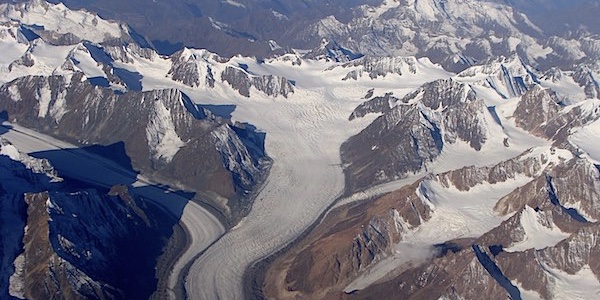
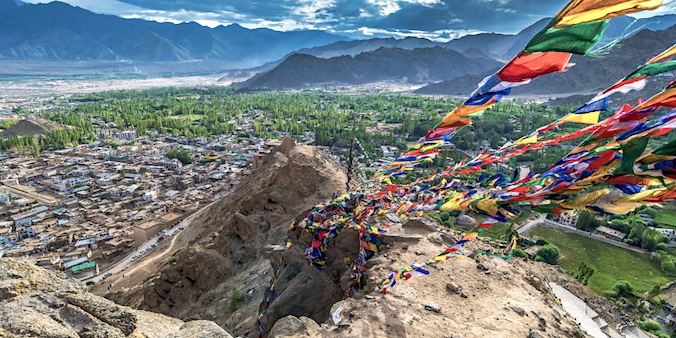
LEH
CARAVAN ROADS OF LADAKH
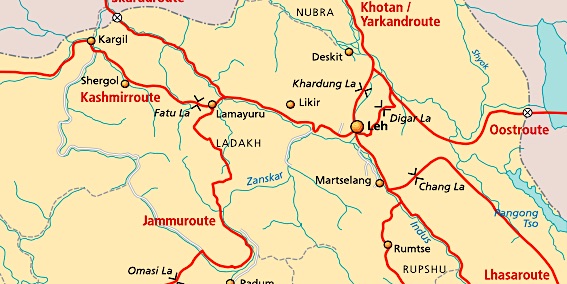

SHAM TREK
LOWER INDUS VALLEY (WEST)
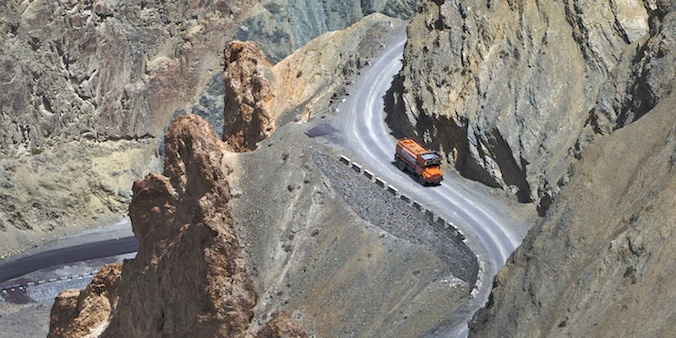

LAMAYURU & ALCHI GOMPA
SHYOK RIVeR LODGE

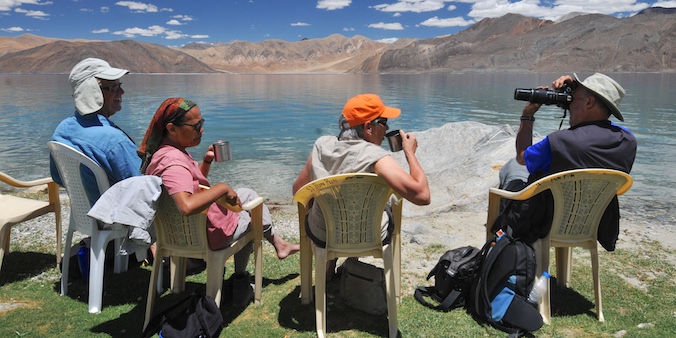
PANGONG Tso (LAKE)
NUBRA VALLEY
